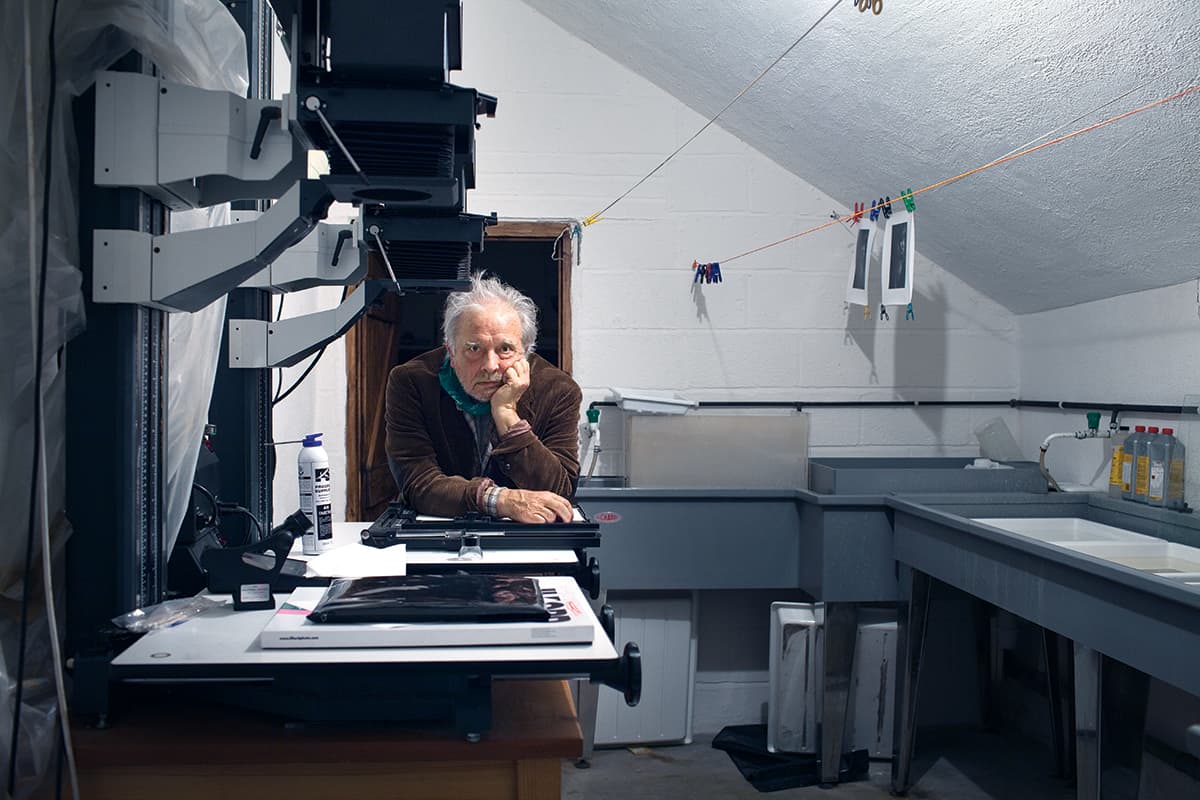For me, David Bailey is one of the ‘Holy Trinity’ of living British photographers, along with Don McCullin and Martin Parr. They’re very different in style, approach and subject matter, but are great photographers. Memorable portraits of great photographers are rare, and my favourite picture of the young Bailey was taken in the early 1960s by Terry O’Neill. It shows him striking a pose as he directs a model during a fashion shoot.
In August 2011, I was commissioned to photograph a 73-year-old Bailey for The Sunday Times, which was publishing an interview with him by journalist Lynn Barber. Bailey was talking to her about an exhibition of his paintings that was being held at a London gallery. It was agreed that we would do the shoot at his farmhouse in Devon, on the edge of Dartmoor.

I drove down with my assistant Emily, and had a slight feeling of trepidation at the thought of shooting Bailey’s portrait. However, I wasn’t as intimidated as some people I know who have photographed him because his photographic heroes – people such as Irving Penn and Richard Avedon – are my heroes, too. We also had a professional link, because at the beginning of my career I had assisted John Swannell, who, many years earlier, had assisted Bailey.
When we arrived, things didn’t get off to a good start. Bailey was initially quite brusque and defensive, so I decided not to take pictures straightaway. Instead, Emily and I, together with Bailey and his wife Catherine, sat in the kitchen for quite a long time and talked about our photographic heroes. He was dismissive of most of today’s photographers, but very knowledgeable and a real enthusiast for the medium.
During the conversation, he really warmed to us and became much more friendly, I think partly because he could see that I share his enthusiasm for photography. After this, it became a very pleasant shoot and he was making wisecracks throughout. He was generous with his time and over the next hour and a half I shot nearly 300 pictures. When it was time to leave, he kindly asked if we wanted to stay the night.
I like to improvise, so we tried out different locations around the house and garden, including Bailey’s darkroom. His house is beautiful, full of attractive objects, and has lots of art on the walls. He had a camera with him during the shoot and at times was taking pictures of me while I was photographing him. Then, we decided to take some pictures in the converted barn where he has his painting studio.
I prefer to use natural light and this room had plenty of daylight coming in from a roof window. The room was filled with various canvases, easels and paint pots. Despite the disorder, it seemed a good place to shoot. I quite like the idea that you can have a portrait that’s cluttered, because it’s more interesting and more akin to real life. Then, if you have an area within that frame where things are clear, that tends to be where the viewer’s eye goes.
I asked Bailey to sit on a chair. I found a blank white canvas and roughly propped it up behind him. This created a frame within the frame. His Jack Russell terrier, named Pig, sat on his lap. I don’t think I asked Catherine to be in the shot; maybe she was just holding the canvas in place, but when I saw her through the viewfinder, I felt she added another important element to the picture.
I took the picture with my Canon EOS 5D Mark II. I used a 35mm f/1.4 L-series lens, rather than my preferred 50mm, because I couldn’t get far enough back in the room. I only used natural light and the settings were 1/50sec at f/3.5, ISO 320.
I took a number of shots of this scene, including close-ups and one with Pig yawning, but I liked this one the most. Bailey can be a quite a difficult character, but here he’s looking a little embattled and his body language is slightly defensive. There’s something childlike about him and, at heart, he’s a dyslexic boy fighting his corner. This picture was published over a double-page spread in The Sunday Times and it’s the only one from the shoot that’s been seen until now.
After the shoot, I sent Bailey a print of the main picture, hoping that he may dig out a shot he had taken while I was photographing him, so I’d have a Bailey portrait of me. I never heard back from him, unfortunately. Nevertheless, it was great meeting him and I look back on it as a really memorable shoot.








